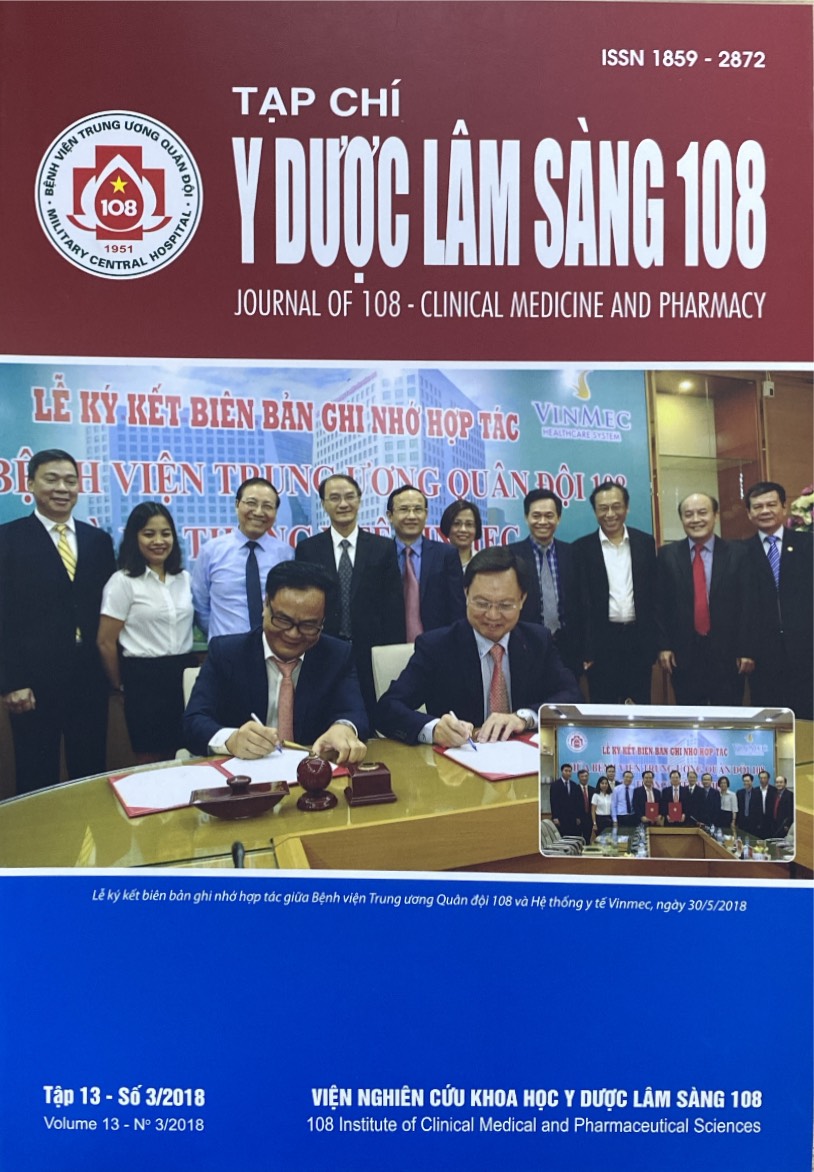Relationships between procalcitonin concentrations and the clinical features and investigations in infectious children treated at the Intensive Care Unit of the Vietnam National Children’s Hospital
Main Article Content
Keywords
Procalcitonin, infection
Abstract
Objective: This study was conducted to evaluate the relationships between the PCT concentrations and clinical features and investigation in infectious children. Subject and method: This was a descriptive prospective study which was conducted on 96 children aged between 1 month and 18 years old with different status of infection. Result: Serum PCT concentrations were associated with clinical features (positive correlation with temperature, heart rate, and negative correlation with systolic blood pressure) and investigations (CRP, white blood cells) in children with bacterial infection. Conclusion: PCT is a marker to assess the severity of infection.
Article Details
References
1. Assicot M, Gendrel D, Carsin H et al (1993) High serum procalcitonin concentrations in patients with sepsis and infection. Lancet 34 (8844): 515-518.
2. Biban P, Gaffuri M, Spaggiari S et al (2012) Early recognition and management of septic shock in children. Pediatric Reports 4(1): 48-51.
3. Castelli P, Cita GP et al (2006) Procalcitonin,
C- Reactive Protein, white blood cell and SOFA score in ICU diagnosis and monitoring of sepsis. Minerva Anestesiol 72: 68-80.
4. Cho S, Choi J (2014) Biomarkers of sepsis. Infection & Chemotherapy 46(1): 1-7.
5. Goldstein B, Giroir B, Randolph A (2005) International pediatric sepsis consensus conference: Definitions for sepsis and organ dysfunction in pediatrics. Pediatric Critical Care Medicine 6(1): 2-8.
6. Harbarth H, Froidevaux C et al (2001) Diagnostic value of procalcitonin, interleukin-6, IL-8 in critically ill admitted with suspected sepsis. American Jounal of Respiratory And Critical Care Medicine 164: 397-402.
7. Hatherill SM, Sykes K, Turner C, Murdoch IA (1999) Diagnostic markers of infection: Comparison of procalcitonin with C reactive protein and leucocyte count. Arch Dis Child 81: 417-421.
8. Nguyen HB, Rivers EP, Abrahamian FM et al (2006) Severe sepsis and septic shock: Review of the literature and emergency department management guidelines. Annals of Emergency Medicine 48(1): 54.e1.
9. Nor MB, Ralib AM (2014) Procalcitonin clearance for early prediction of survival in critically ill patients with severe sepsis. Critical Care Research and Practice: 1-7.
10. Ryan M, Levy MM (2003) Review: Clinical review: Fever in intensive care unit patients. Critical Care 7(3): 221-225.
2. Biban P, Gaffuri M, Spaggiari S et al (2012) Early recognition and management of septic shock in children. Pediatric Reports 4(1): 48-51.
3. Castelli P, Cita GP et al (2006) Procalcitonin,
C- Reactive Protein, white blood cell and SOFA score in ICU diagnosis and monitoring of sepsis. Minerva Anestesiol 72: 68-80.
4. Cho S, Choi J (2014) Biomarkers of sepsis. Infection & Chemotherapy 46(1): 1-7.
5. Goldstein B, Giroir B, Randolph A (2005) International pediatric sepsis consensus conference: Definitions for sepsis and organ dysfunction in pediatrics. Pediatric Critical Care Medicine 6(1): 2-8.
6. Harbarth H, Froidevaux C et al (2001) Diagnostic value of procalcitonin, interleukin-6, IL-8 in critically ill admitted with suspected sepsis. American Jounal of Respiratory And Critical Care Medicine 164: 397-402.
7. Hatherill SM, Sykes K, Turner C, Murdoch IA (1999) Diagnostic markers of infection: Comparison of procalcitonin with C reactive protein and leucocyte count. Arch Dis Child 81: 417-421.
8. Nguyen HB, Rivers EP, Abrahamian FM et al (2006) Severe sepsis and septic shock: Review of the literature and emergency department management guidelines. Annals of Emergency Medicine 48(1): 54.e1.
9. Nor MB, Ralib AM (2014) Procalcitonin clearance for early prediction of survival in critically ill patients with severe sepsis. Critical Care Research and Practice: 1-7.
10. Ryan M, Levy MM (2003) Review: Clinical review: Fever in intensive care unit patients. Critical Care 7(3): 221-225.
 ISSN: 1859 - 2872
ISSN: 1859 - 2872
